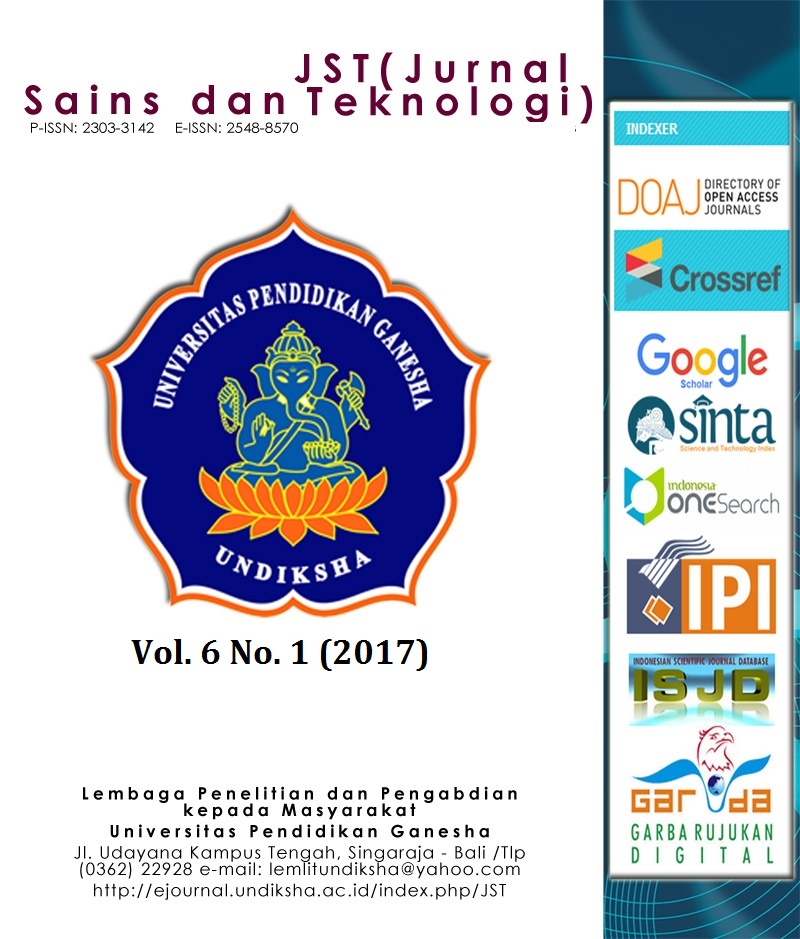RANCANG BANGUN SISTEM INFORMASI INVENTARIS BPJS KETENAGAKERJAAN CABANG PEKALONGAN
DOI:
https://doi.org/10.23887/jstundiksha.v6i1.9064Kata Kunci:
Information Systems, Inventory, Waterfall, BPJS PekalonganAbstrak
BPJS (Social Security Provider) Employment Branch Pekalongan has the Information Technology division that having responsibilities to implement data recapitulation such as incoming goods data, outgoing goods data, and inventory data. Currently the data management still uses conventional methods that is manual system resulting some problems, these are; really takes time in searching data and less effective in doing the job. The aim of this study are to design and to build a system inventory information on BPJS Employment Branch Pekalongan supported by waterfall method. In the information system has the features of good data management items of incoming and outgoing goods. Continued to make the reports that can be printed in pdf format. The evaluation was done to measure several parameters such as the usefulness of the application parameters, usability and user satisfaction. Based on the results of the evaluation in the user environment involving four respondents obtained positive results. This indicates that the information system has the benefit value, usefulness and help in improving the performance of the relevant sections.
Referensi
Dennis, A., Wixom, B. H., & Roth, R. M. (2012). System Analysis and Design. Retrieved from http://www.wiley.com/college/dennis
Dettenbach, M., & Thonemann, U. W. (2015). The value of real time yield information in multi-stage inventory systems - Exact and heuristic approaches. European Journal of Operational Research, 240(1), 72–83. http://doi.org/10.1016/j.ejor.2014.06.028
Ignaciuk, P. (2015). Discrete-time control of production-inventory systems with deteriorating stock and unreliable supplies. IEEE Transactions on Systems, Man, and Cybernetics: Systems, 45(2), 338–348. http://doi.org/10.1109/TSMC.2014.2347012
Sibarani, E. M. (2012). Simulating an integration systems: Hospital information system, radiology information system and picture archiving and communication system. Proceeding of 2012 International Conference on Uncertainty Reasoning and Knowledge Engineering, URKE 2012, 62–66. http://doi.org/10.1109/URKE.2012.6319585
Subhiyakto, E. R., Astuti, Y. P., Umaroh, L., Utomo, D. W., Rachmawanto, E. H., & Sari, C. A. (2017). Rancang bangun sistem informasi pengarsipan data pasien klinik cemara. Techno.com, 16(1), 25–34.
Subhiyakto, E. R., & Kamalrudin, M. (2014). Customization of Requirements Modeling Tool For Software Engineering Education. International Symposium on Research in Innovation and Sustainability, 2014(October 2014), 1581–1584.
Subhiyakto, E. R., & Utomo, D. W. (2016a). Software Testing Techniques And Strategies Use In Novice Software Teams. SISFO, 5(5).
Subhiyakto, E. R., & Utomo, D. W. (2016b). Strategi, teknik, faktor pendukung dan penghambat pengujian untuk pengembang perangkat lunak pemula, (Sentika), 236–241.
Zhao, X., & Qiu, M. (2007). Information Sharing in a Multi-Echelon Inventory System. Tsinghua Science and Technology, 12(4), 466–474. http://doi.org/10.1016/S1007-0214(07)70069-X
Zhi, L. (2012). Design and implementation of the comprehensive archives information digital management system. 2012 2nd International Conference on Consumer Electronics, Communications and Networks, CECNet 2012 - Proceedings, 1764–1767. http://doi.org/10.1109/CECNet.2012.6201845
Unduhan
Diterbitkan
Cara Mengutip
Terbitan
Bagian
Lisensi
Authors who publish with the Jurnal Sains dan Teknologi (JST) agree to the following terms:
- Authors retain copyright and grant the journal the right of first publication with the work simultaneously licensed under a Creative Commons Attribution License (CC BY-SA 4.0) that allows others to share the work with an acknowledgment of the work's authorship and initial publication in this journal.
- Authors are able to enter into separate, additional contractual arrangements for the non-exclusive distribution of the journal's published version of the work (e.g., post it to an institutional repository or publish it in a book), with an acknowledgment of its initial publication in this journal.
- Authors are permitted and encouraged to post their work online (e.g., in institutional repositories or on their website) prior to and during the submission process, as it can lead to productive exchanges, as well as earlier and greater citation of published work. (See The Effect of Open Access)
















